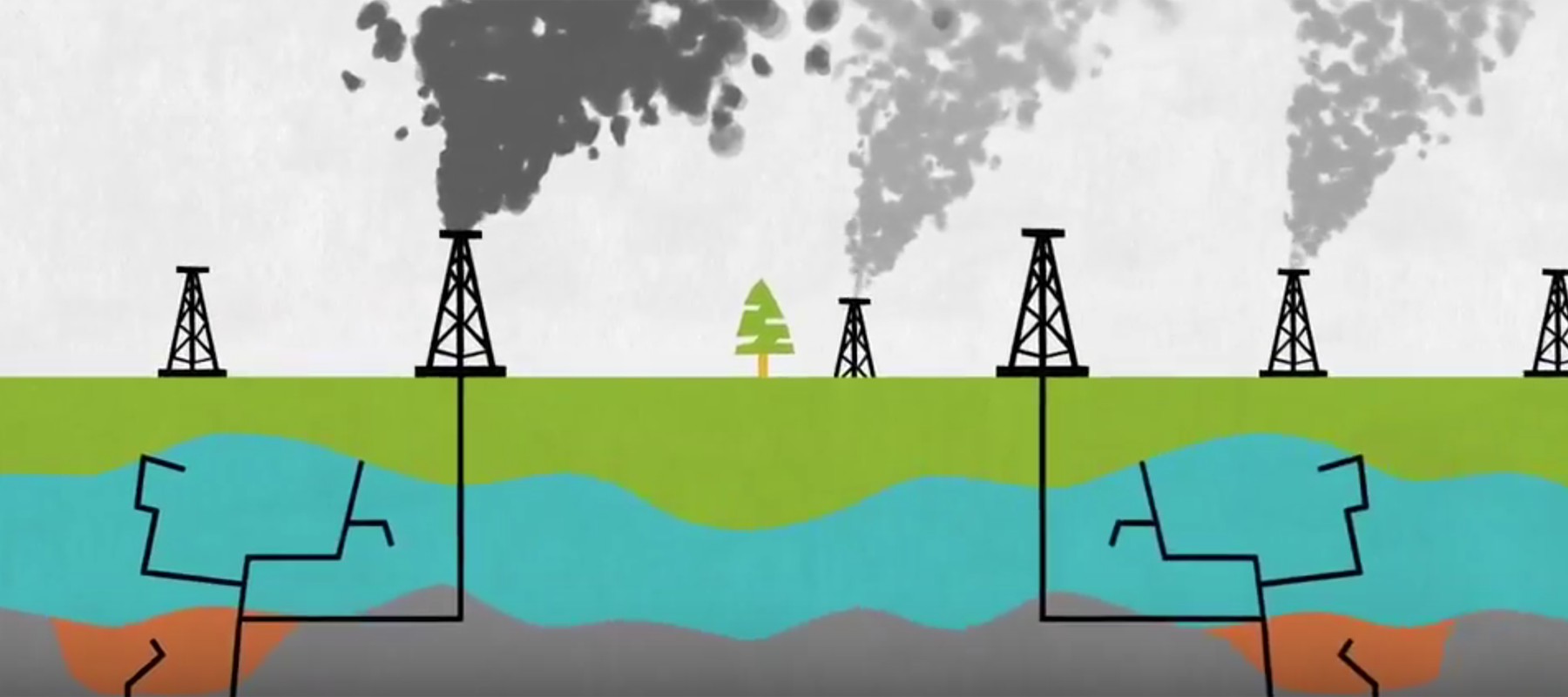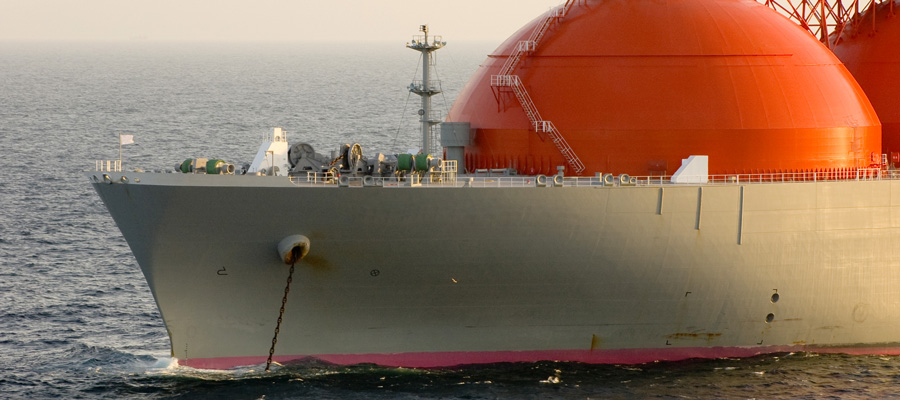Methane emissions from fracking: clean LNG’s dirty secret

The proposed Woodfibre LNG plant near Squamish is an example of what has been called “clean LNG” – that is, the plant will use grid electricity from BC Hydro to power the energy-intensive liquefaction process, instead of gas. This would reduce greenhouse gas emissions significantly for this one part of the supply chain. The Woodfibre LNG facility is also much smaller than LNG plants proposed further up the coast. However, even at this small size, a review of upstream emissions (from extraction, processing and transport of gas to the LNG terminal) suggests it is anything but clean energy.
I made the following submission to in response to a call by the Canadian Environmental Assessment Agency for public comments on a February 2016 analysis conducted by Environment and Climate Change Canada, which seeks to estimate upstream GHG emissions for the Woodfibre LNG project. (You can make a submission too.)
This submission is in regards to the Review of Upstream Greenhouse Gas Emissions Estimates for the proposed Woodfibre LNG project. It is good news that the federal environmental assessment process is now considering upstream emissions. However, the review is deeply flawed by (1) lacking any review of recent scientific literature on methane emissions from upstream gas operations, and (2) by not being transparent about data sources and assumptions driving its presented range of results.
The review gives the impression of consulting multiple sources, which come to a common conclusion of 700-800 kt CO2e upstream emissions per year. My concern is that all of the approaches cited are based on similar assumptions and use data provided by the gas industry. These data are not empirically-based through independent and verified testing of emissions from actual upstream operations. This is an urgent issue, given that about 85% of current BC gas production is now from unconventional sources (i.e. fracking and horizontal drilling operations). Potentially 100% of the gas supplied to Woodbridge LNG would be from similar unconventional sources, which have a much larger upstream carbon footprint than conventional gas production.
The elephant in the room is the complete omission of any discussion of fugitive emissions of methane, the principal component of natural gas, and a greenhouse gas much more potent than carbon dioxide. The review only cites emission factors associated with various parts of the supply chain, all of which imply assumed methane leakage rates far below what recent scientific literature has uncovered.
A related concern is the use of global warming potentials (GWP) that have not been updated in line with current science, and that are based only on a 100-year time frame. How these are integrated into the analysis is not clear, but in national and BC greenhouse gas inventories it is still common to use a GWP for methane of 21 times CO2 over a 100-year period. In contrast, the Intergovernmental Panel on Climate Change’s 2007 AR4 report updated that to 25 times, and the 2014 AR5 report has updated that GWP to 34 times.
Methane (CH4) breaks down into CO2 in 12 years, and during the time it is in the atmosphere, it is more than 100 times more heat-trapping than CO2. Many climate scientists are now publishing estimates based on the GWP of methane over a 20-year period, which was recently raised to 86 times CO2 in AR5, up from 72 times in AR4.
As a result, even very small amounts of leakage from wellhead to final combustion have significant climate impacts. The use of 100-year time frames is convention, and may make sense in longer-term (multi-century) analyses, but in the current context it only serves to downplay the actual climate impacts of gas development. Global warming and resulting climate impacts are urgent now and require rapid and concerted action over the next few decades.
To illustrate these points, consider a numerical example. At Woodfibre’s planned annual capacity of 2.1 Mt LNG exported, this is equivalent to 5.6 Mt CO2 that will end up in the atmosphere. In addition, gas is used in the extraction, processing and transport of gas to the LNG plant. Some 1.44 units of raw gas have to be produced at the wellhead to produce one unit of gas exported (based on research by scientist David Hughes). Most of this is for the liquefaction process, and we note the proponent’s choice to use grid electricity from BC Hydro. Still, we can assume an additional 10% for gas used at various points in the supply chain, for a total to 6.1 Mt CO2 per year.
Now consider methane leaks. For example, a 1% methane leakage rate over the whole lifecycle would be equivalent to 2.1 Mt CO2e per year (over 100 years) and 5.3 Mt per year (over 20 years). These represent upstream emissions 3 to 7 times larger than reported in the review.
Recent peer-reviewed estimates put methane leakages at higher levels still. A 2015 article by Robert Howarth summarizes the empirical literature since 2011, and generally finds upstream leakage rates between 3.0% and 9.5%, depending on the method of measurement and the particular unconventional gas play. While these estimates are for upstream operations in the United States, in the absence of empirical studies in BC we should assume that impacts are of a similar magnitude.
For Woodfibre LNG, a 3% methane leakage is equivalent to 6.3 Mt CO2e per year (over 100 years) and 16 Mt CO2e per year (over 20 years); and at 5% leakage, equivalent to 10.5 and 26.6 Mt CO2e per year respectively.
From these numbers it is clear that the upstream GHG impact of the Woodfibre project is much larger than stated in the review, and contrary to the urgent need for climate action. While the Woodfibre LNG facility has a more modest size than other LNG proposals, and plans to use grid electricity to lower its carbon footprint, upstream emissions are substantial, and work against BC’s legislated GHG reduction targets of 33% below 2007 levels by 2020, and 80% below by 2050.
Subsequent efforts to evaluate the upstream impacts of LNG projects should: (1) be transparent about data and assumptions used in modelling exercises, in particular GWPs and leakage rates; (2) be grounded in empirical data arising from independent and peer-reviewed research; (3) cite relevant scientific literature; (4) review upstream GHG mitigation plans proposed by the proponent; and (5) produce a range of estimates based on scenarios.
As a final comment, I believe that the full lifecycle emissions should also be part of such reviews. In light of the Paris Agreement to address climate change and reduce global carbon emissions, Canada must show leadership by considering all emissions associated with fossil fuel projects, even though the bulk of those (combustion) emissions will be accounted for in the importing country’s inventory not Canada’s (or British Columbia’s).
Topics: Climate change & energy policy, Environment, resources & sustainability, Fracking & LNG


